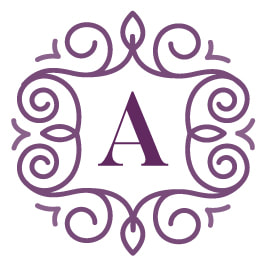What happens in a Reiki treatment?
The patient sits or lies down in a comfortable place, while the practitioner places their hands on or near various areas of the patient's head and body, normally for a few minutes in each position. The Reiki energy then flows through the practitioner and into the patient, and it is this energy that produces the healing effects.
The patient does not need to do anything during the treatment; Reiki is therefore very suitable for those who have limited energy or mobility.
Is Reiki like massage?
Not really. The patient remains fully clothed, and there is no physical pressure involved, so Reiki is less invasive than massage. In fact, many Reiki practitioners don’t use physical touch at all, keeping their hands several centimetres away from the patient at all times. Reiki is therefore very suitable for those who do not wish to be touched.
What does the patient feel during a treatment?
That varies, but it's usually a very pleasant and relaxing experience – the patient may even fall asleep. The energy is often experienced as warmth but there may well also be vibration, and it's common to feel energy moving around within the body. There's often a sense of physical and/or emotional release.
And afterwards?
After a treatment the patient typically feels more relaxed, and often also revitalised. As Reiki works on both the body and the mind/emotions, the patient may well feel both an improvement in their physical condition, such as reduced pain, greater strength and energy levels, and a reduction in the emotional stress associated with facing health challenges.
How long does a Reiki treatment take?
You can receive Reiki for a few minutes, or as long as an hour or considerably more.
How many treatments are needed?
Reiki starts working from the beginning of the treatment, so even one short session will likely be beneficial. For a patient facing health challenges, more treatments will naturally mean greater benefits, but there is no minimum number required.
Are there conditions where Reiki shouldn’t be used?
Reiki is very safe to use, and there are no contra-indications.
Although Reiki is powerful, it is also very gentle, and receiving Reiki as part of your recovery process has been shown to reduce the side-effects of your primary treatment.
What are some of the other advantages of Reiki?
Reiki is a broad-spectrum treatment method, in that it simultaneously supports both the patient’s body and their mind/emotions.
Reiki is very non-invasive, and is therefore suitable even for patients who are physically or emotionally fragile.
Reiki requires no specialist equipment, and there are no pills or potions, or other add-on costs.
Is Reiki affiliated to a religious or spiritual tradition?
No, it isn’t. Reiki is simply a way to support the body and mind/emotions by channelling energy, and does not come with any religious, spiritual or philosophical belief system attached.
What qualifications should a Reiki practitioner have?
Reiki training is normally conducted in 3 levels: Reiki 1, 2 and Master. While the accepted threshold to practise professionally in Australia is Reiki 2, and many practitioners have only completed Reiki 2, Reiki Master training is considerably more thorough and is therefore highly desirable.
|
|
phone |
0421 044 653
|
address |
ELWOOD - MELBOURNE- ROME
|

